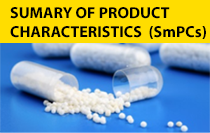
Report Adverse Reaction

Approved fees Schedules

Products Recall And Alert

For Stakeholders

Submit a Complaint

FAQs

Submit Advert Application

Submit Advert Application

Consumer Education
News & Events
Latest News
2024-04-17 00:00:00
Ghana�s COVID-19 Safety Monitoring Effects Receive Global Acclaim2024-04-05 00:00:00
FDA AND AFROCET MONTGOMERY MEETS STAKEHOLDERS2024-03-13 00:00:00
NEW FDA FEES AND CHARGES EFFECTIVE MONDAY 18th MARCH 20242024-02-01 00:00:00
DRAFT GUIDELINE FOR PUBLIC CONSULTATION "FDA GUIDELINE ON IDENTIFICATION AND DATA CAPTURE FOR PHARMACEUTICAL TRACEABILITY"2023-11-17 00:00:00
JOHN OWUSU GYAPONG IS THE NEXT ARUA SECRETARY-GENERAL2023-11-17 00:00:00
FDA LAUNCHES THE NATIONAL TOBACCO CONTROL STRATEGYREGULATING OF TOOTHBRUSHES IN GHANA : FDA's NEW MOVE TO PROTECT THE CONSUMER
The Food and Drugs Authority (FDA) on Friday, 25th June 2021 issued a notice informing the public of its plan to start the regulation of toothbrushes in Ghana. This groundbreaking effort in the FDA's regulatory activities is in the Authority's quest to continuously protect public health and safety in accordance with the Public Health Act, 2012, Act 851.

The Public Health Act provides that any device intended for use in the diagnosis of disease or other conditions, or in the cure, mitigation, treatment, or prevention of disease, in man or other animals or intended to affect the structure or any function of the body of man or other animals is a medical device. Thus, a toothbrush must be classified as a medical device because it is a device for cleaning the teeth, gum and tongue to remove plaques and prevents tooth decay.
Based on the classification rules outlined in the medical devices guidelines, toothbrushes are class I medical devices. Thus, the need to regulate toothbrushes is crucial as the potential hazards associated with the use of toothbrushes can be threatening. Some of these dangers include poorly fastened bristles which can dislodge during brushing to cause choking, wrong texture choice for tufts which may damage the gum, cause enamel abrasion leading to hypersensitivity of teeth and parts of powered toothbrush breaking off in the mouth during use and causing tooth breakage.
The risks in using unregulated toothbrushes include tiny brush parts of powered toothbrush flying into the eyes of users which can cause damage to the eyes, powered toothbrushes, causing fires, shocks, burns and even explosion eyes. However, with the regulation of this medical device, these incidences can be adequately and effectively managed.
The types of toothbrushes to be regulated include, but not limited to manual toothbrush, powered toothbrush (battery and electric), specialized toothbrush (Interdental brush), chewable toothbrush and all other forms of toothbrush (chewing stick and chewing sponge)
The FDA would be regulating this medical device with the Ghana Standard specification for Toothbrush-GS 254:2004. The standard makes provision for the following: Classification of toothbrush, Materials for handle and stock, brush, and fastening. The specification also makes room for the dimension of handle and stock, Workmanship (finishing of toothbrush surfaces), tuft specification (texture, number, length, diameter, depth, fastening), brush characteristics, neck specification, packaging, marking (labelling) and testing procedures.
A risk-based approach will be used to classify toothbrushes into three (3) categories of low, medium and high risks. The low-risk category of toothbrushes poses low risk to the health and safety of user and they include chewing stick and sponge, manual toothbrush and toothbrushes registered in their countries of origin such as Nigeria by National Agency for Food and Drug Administration and Control (NAFDAC), United States of America by the US Food and Drug Administration (FDA), Australia by Therapeutic Goods Administration (TGA), Canada by Health Canada, Japan among others. The medium risk category are the moderate risk involved and includes battery powered toothbrush, while the High Risk category include electric/rechargeable toothbrush and toothbrushes from China.
The additional risk classification scheme will also apply based on the features of the toothbrush, the mode of action, hazards associated with the toothbrush and the country/region of origin.
The documents required for toothbrushes except, chewing stick/sponge include, but not limited to absence of biological hazards (ISO 7405 and ISO 10993-1), biocompatibility and a study report on the material used in the manufacturing of the filaments of the toothbrush. The others are device description and features, risk analysis report, eelectrical safety report for battery powered toothbrushes, certificate of analysis of the finished product, manufacturing license, free sale certificate and contract agreement.
As part of the implementation plan for the regulation of toothbrushes in Ghana, the FDA has engaged NAFDAC, the only regulatory agency currently regulating toothbrushes within the sub-region, the Ghana Standards Authority on the review of the standard for toothbrushes-GS 254:2004 to broaden the scope to include battery-powered toothbrushes, special purpose treatment toothbrushes and dental floss.
The FDA has also engaged the following stakeholders to ensure the effective implementation of the regulation of toothbrushes in Ghana:the Ghana Dental Association, the Importers/wholesalers of toothbrushes, the market authorization holders and importers of toothpastes.
THE FDA MISSION
The FDA exist to ensure the safety, quality and efficacy of human and veterinary drugs, food, biological products, cosmetics, medical devices, household chemical substances and clinical trials, and the control of tobacco products through the enforcement of relevant standards to protect public health.

Subscription Management Centre












